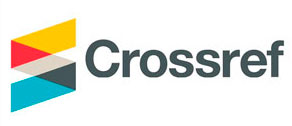Pengaruh Kemampuan Individual Menilai Informasi Terhadap Minat Mahasiswa Akuntansi Dalam Menggunakan Internet Sebagai Sumber Pustaka Studi Kasus pada Universitas Bandar Lampung
Abstract
Keywords
Full Text:
PDFReferences
Ajzen, I. From intentions to actions: A theory of planed behavior. In J. Kuhl and J. Beckmann (eds.). Action Control: From Cognition to Behavior. New York: Springer-Verlag.1985, pp. 11-39.
Bailey. James E. and Sammy W, Pearson, "Development of a Tool for Measuring and Analyzing Computer User Satisfaction." Management Science, (29:5), 1983, pp.530-545
Darsono Li. “Examining Information Technology Acceptance By Individual Professionals.”Gadjah Mada Internatioal Jounal of Business, (7:2), 2005, pp.155-178
Davis, F. D. “Perceivedd Usefulness, Perceivedd Ease of Use, and End User Acceptance of Information Technology,” MIS Quarterly (13:3), 1989, pp. 319-340.
DeLone, W.H., and Ephraim R. Mclean, “Information System Success: The Quest for theDependent Variable”. Information System Research, 1992, pp. 60-95.
Ferdinand, Augusty. Structural Equation Modelling dalam Penelitian Manajemen, Aplikasi Model-model rumit dalam penelitian untuk tesis Magister dan Disertasi Doktor.Badan Penerbit Universitas Diponegoro, Semarang. 2006.
Ghozali. Aplikasi Analisis Multivariate dengan Program SPSS. Badan Penerbit Universitas Diponegoro. Semarang. 2006.
Ghozali. “Model Persamaan Struktural : Konsep Aplikasi dengan AMOS 16,0.” Badan Penerbit Universitas Diponegoro. 2008.
Gordin, D.L. et.al. “Using the WorldWideWeb to Build Learning Communities¨.Northwestern University Magazine, April, 1995. pp1-17.
Hair, J.F., R.E. Anderson., R.L. Tatham, and W.C. Black. Multivariate data Analysis.Prentice Hall, Fourth edition, 1998.
Hartono, Jogiyanto, Sistem Informasi Keperilakuan. Penerbit Andi, 2007.
Hong W, J.Y.L. Thong , W.M. Wong dan K.Y. Tam. “Determinants of User Acceptance of Digital Libraries: An Empirical Exaniation of Individual Differences and System Characteristics.” Journal of Management Information System, (18:3), 2002. pp.97-124
Hsu M.H dan Chiu C.M. “Predicting Electronic Service Continuance With a Decomposed Theory of Planned Behavior”. Behavior and Information Technology (23:5), 2004.pp. 359-373
Hu. P.J, P.Y.K. Chau, O.R. Liu Sheng dan kK.Y Tam. “Examining the Technology Acceptance Model Using Physician Acceptance of Telemedicine technology.”Journal of Management Information System, (16:2), 1999, pp.91-112
Istianingsih dan Setyo Hari Wijanto. “Pengaruh Kualitas Sistem Informasi, Perceived usefulness, dan Kualitas Informasi Terhadap Kepuasan Pengguna Akhir Software Akuntansi “. Simposium Nasional Akuntansi. 2008.
Li, C. 1997. “ERP packages: What’s next?”,Information System Management, 16(3), 31–35.Li, Y. N., Tan, K. C. & Xie, M. Measuring web-based service quality, Total Quality Management, (13:5), 2002, pp. 685–700.
Lin, J. C. C. & Lu, H. P. Towards an understanding of the behavioural intention to use a web site, International Journal of Information Management, (20:3), 2002, pp. 197–208.
Liu, C. K. & Arnett, P. Exploring the factors associated with web site success in the context of electronic commerce, Information and Management, (38:1), 2000, pp. 23–33.
Rai, A., Lang, S.S. and Welker, R.B., ”Assessing the Validity of IS Success Models: An Empirical Test and Theoretical Analysis”, Information System Research, Vol.13,No.1. 2002, pp. 29-34.
Subing, Achmad at all."Pengaruh Kemampuan Individual Menilai Informasi Terhadap Minat Mahasiswa Akuntansi Dalam Menggunakan Internet Sebagai Sumber Pustaka Studi Kasus pada Universitas Bandar Lampung":Universitas Bandar Lampung,2011
DOI: http://dx.doi.org/10.36448/jak.v2i2.206











